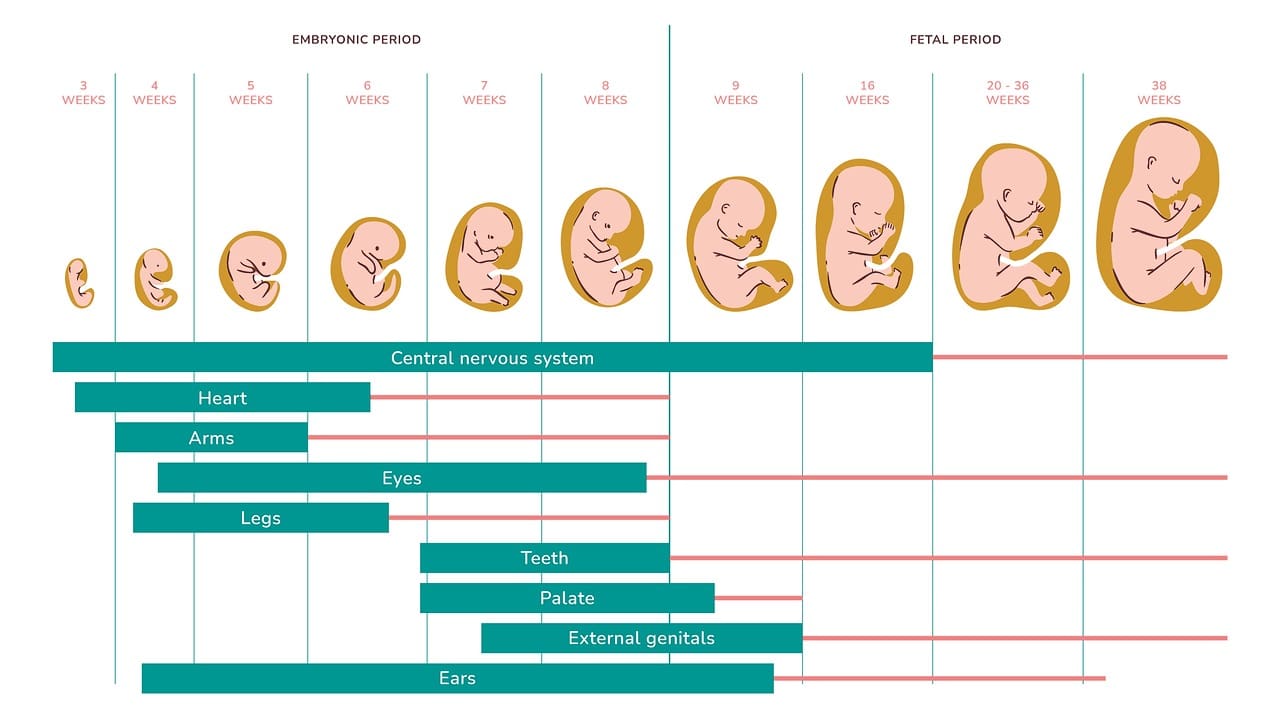What Is Perinatology? Meaning, Definition, and Patient Friendly Overview
Perinatology Ultrasound: What It Is, What to Expect, and Why It Matters
A perinatology ultrasound is a detailed pregnancy scan that checks your baby’s anatomy, growth, and surroundings. It’s noninvasive and uses sound waves, not radiation, to make images. During the scan, you’ll lie down while a small amount of gel is put on your belly. A handheld probe moves over your skin to take pictures and measurements.
• First trimester: Confirmation of pregnancy location and viability, crown–rump length (CRL) to establish gestational age, and eligibility for nuchal translucency (NT) screening in the correct window.
• Second trimester: An anatomical survey to assess organs, spine, limbs, and facial structures, along with the placenta and amniotic fluid.
• Third trimester: Growth checks using EFW calculations, amniotic fluid evaluation, and Doppler studies when indicated to assess placental and fetal blood flow.
Why is this important for you? Ultrasound is a key part of perinatology care. It helps confirm your due date, track your baby’s growth, and show when you might just need reassurance or when extra follow up is needed. Your results are compared to reference ranges for your specific week of pregnancy.
Due Date Calculator (EDD) in Perinatology: Accurate Pregnancy Dating
Having an accurate estimated due date (EDD) helps organize your entire care plan, including when to perform screenings, monitor growth, and plan for delivery. Perinatology uses a “best dating” method:
- LMP method: Based on the first day of your last menstrual period (LMP).
- Early ultrasound dating: CRL measurement in the first trimester offers the most precise dating; if it differs from LMP beyond accepted limits, clinicians update the EDD to the ultrasound based date.
- Consistency: Once your best EDD is set early on, it usually stays the same, since early measurements are more accurate for dating your pregnancy.
What this means for you: if your due date is adjusted after the first scan, that’s expected and beneficial. It ensures you get the right tests (such as NT, anatomy scan, or glucose screening) at the right time and improves the interpretation of growth and Doppler results later on.
Pregnancy Calculator and Gestational Age: Perinatology Timing Guide

A pregnancy calculator uses either your last menstrual period (LMP) or an early ultrasound to figure out your gestational age, which is how many weeks and days pregnant you are. Perinatology uses this information to schedule:
- NT screening in the first trimester.
- The mid pregnancy anatomical survey
- Third trimester growth and fluid checks
- Doppler studies and BPP when indicated
Since every reference range depends on gestational age, having the right dates is key for accurate results. This means you’re less likely to need repeat visits because of timing mistakes, and you can feel more confident about each step.
Nuchal Translucency (NT) in Perinatology: First Trimester Screening Explained
- NT screening is quick, safe, and noninvasive.
- An increased NT result does not equal a diagnosis; it signals the need to discuss options for further evaluation.
- Timing matters: measuring NT within the correct gestational age window ensures the result can be properly interpreted.
Umbilical Artery Doppler in Perinatology: Understanding S/D Ratio and Flow

Umbilical artery Doppler evaluates the blood flow from the placenta to the baby. It uses a specialized ultrasound mode (Doppler) to measure flow patterns and calculate indices such as the S/D ratio (systolic/diastolic), pulsatility index (PI), and resistance index (RI).
Why it’s useful:
• It helps assess the efficiency of placental blood flow.
• It’s especially valuable when growth appears slower than expected (small for gestational age) or when other signs suggest the placenta needs closer observation.
• Serial measurements over time reveal trends that guide monitoring and delivery planning.
For you, this test feels just like a regular ultrasound. Your results are compared to normal ranges for your stage of pregnancy, and your doctor will explain what they mean in simple, clear terms.
MCA Doppler Perinatology: What Middle Cerebral Artery Testing Shows ?
The middle cerebral artery (MCA) Doppler checks blood flow in your baby’s brain. Perinatology teams often look at the peak systolic velocity (PSV) and may compare it to the average for your baby’s gestational age using multiples of the median (MoM).
How it helps:
- It complements the umbilical artery Doppler to build a fuller picture of fetal circulation.
- Patterns in MCA flow can guide how closely to monitor and when additional testing is helpful.
For you, MCA Doppler is painless and quick. It adds another layer of reassurance or prompts timely follow up, depending on what it shows.
Estimated Fetal Weight (EFW) in Perinatology: Biometry, Percentiles, and Growth

EFW uses several measurements, usually head size, belly size, and thigh bone length, to estimate your baby’s weight. Perinatology looks at EFW percentiles to see how your baby’s size compares to what’s expected for that stage of pregnancy.
What to expect:
- A single EFW is informative, but trends over time are most meaningful.
- Being below or above certain percentiles doesn’t automatically mean something is wrong; it simply guides whether to increase monitoring.
- EFW is considered along with amniotic fluid levels, Doppler results, and sometimes the BPP to give a full picture of your baby’s health.
You’ll receive clear explanations of what the numbers mean for your baby and what, if anything, changes in your care plan.
Biophysical Profile (BPP) and Fetal Monitoring: A Patient’s Guide
- Fetal breathing movements
- Body movements
- Muscle tone
- Amniotic fluid volume
- Fetal heart rate reactivity (when a non stress test is included)
Perinatology Reference Ranges: Interpreting Your Ultrasound Results
Every measurement in pregnancy, like NT, EFW, or Doppler results, has a normal range that changes each week. Reference ranges help your doctor see if a value is typical for your baby’s stage of pregnancy.
Key points:
• One measurement slightly outside the expected range is often less meaningful than a pattern over time.
• Trends help distinguish normal variation from values that need closer attention.
• Reference ranges prevent unnecessary worry while ensuring that true concerns are identified early.
Your care team will always explain technical results in practical terms, letting you know what’s normal, what might need another look, and what steps will help keep you and your baby safe.
Prenatal Screening in Perinatology: Down Syndrome Risk and Ultrasound Markers

Perinatology uses ultrasound markers and your personal health details to estimate the chance of some chromosomal conditions. For example, NT is checked in the first trimester, and other markers are reviewed during the mid pregnancy scan.
What this means for you:
• Screening estimates risk; it does not diagnose.
• If your screening shows a higher chance, your care team will calmly explain your options and provide supportive follow up.
• Accurate dating ensures each screening happens in its ideal window, improving reliability.
The focus is on helping you make informed choices and giving steady support, not on making quick decisions.
Perinatology Explained: Maternal & Fetal Medicine Care Pathway
Here’s what a typical perinatology journey looks like:
• Early visit: Confirm the pregnancy location and viability, and establish or refine the EDD using the CRL.
• First trimester: NT measurement in the correct window, aligned with the most accurate gestational age.
• Mid pregnancy: Comprehensive anatomy ultrasound to assess development and the pregnancy environment.
• Third trimester: Growth surveillance with EFW and amniotic fluid assessment; Doppler studies (umbilical artery and MCA) and BPP when indicated.
During your care, the main goals are good timing, clear information, and reassurance. Each result helps create a care plan for monitoring and delivery that puts safety first.
Perinatology Near Me: When to Book a Specialized Pregnancy Evaluation ?
Consider a perinatology evaluation when:
* You’re advised to have detailed ultrasounds or specialized Doppler studies.
* Growth measurements suggest your baby is measuring small or large for gestational age.
* You’d like a thorough, structured review of fetal development with clear reference to gestational age ranges.
* You want your screening and monitoring to be precisely aligned with your EDD to minimize uncertainty.
At your visit, you can expect a careful review of your history, an ultrasound that matches your pregnancy stage, and a clear explanation of the results and what will happen next.
Liv Hospital Perinatology

Risky pregnancy is a condition that puts the mother or baby, or both, at risk in terms of complications during pregnancy, during childbirth, or after childbirth. Successful treatment and deliveries are performed in expert hands with new methods and developing technology at Liv Hospital Perinatology Clinic.
Services Provided in Liv Hospital Risky Pregnancy Follow Up
- Follow up of risky pregnancies (heart, glucose, hypertension, thyroid, hematological, rheumatic, liver, kidney diseases, etc.)
- Chorionic villus biopsy (sampling from the placenta between 11-14 weeks due to chromosome analysis and research of other genetic diseases)
- Amniocentesis (due to chromosome analysis and research of other genetic diseases)
- Fetal neurosonography (targeted brain and central nervous system examination)
- Fetal cardiac advanced level examination, fetal echocardiography
- 4D dimensional ultrasonographic evaluation
- Fetal blood sampling (drawing blood from the cord)
- Evaluation of patients at risk of premature birth within the framework of a special preterm birth screening, prediction and prevention program
- Inspection of recurrent miscarriages and fetal death and investigation of placental pathologies in partnership with the department of perinatal pathology
- Inspection of thrombophilia / blood clotting disorders and genetic mutations
For more information about our academic and training initiatives, visit Liv Hospital Academy .
Frequently Asked Questions for Perinatology
What is EFW (estimated fetal weight) in perinatology?
A calculation from ultrasound measurements that estimates your baby’s weight and percentile for gestational age. Trends guide monitoring.
What is a biophysical profile (BPP)?
A combined assessment of fetal well being using ultrasound and, often, a non stress test to evaluate movement, tone, breathing, and amniotic fluid.
What is MCA Doppler in perinatology?
A Doppler of the middle cerebral artery that adds insight into fetal circulation and complements umbilical artery assessment.
What is a perinatology ultrasound in the first trimester?
Confirmation of viability and location, precise dating with CRL, and NT measurement in the appropriate window.
What is perinatology? Is it the same as maternal fetal medicine?
In everyday use, yes. Both terms describe specialized pregnancy care centered on the mother and baby.


